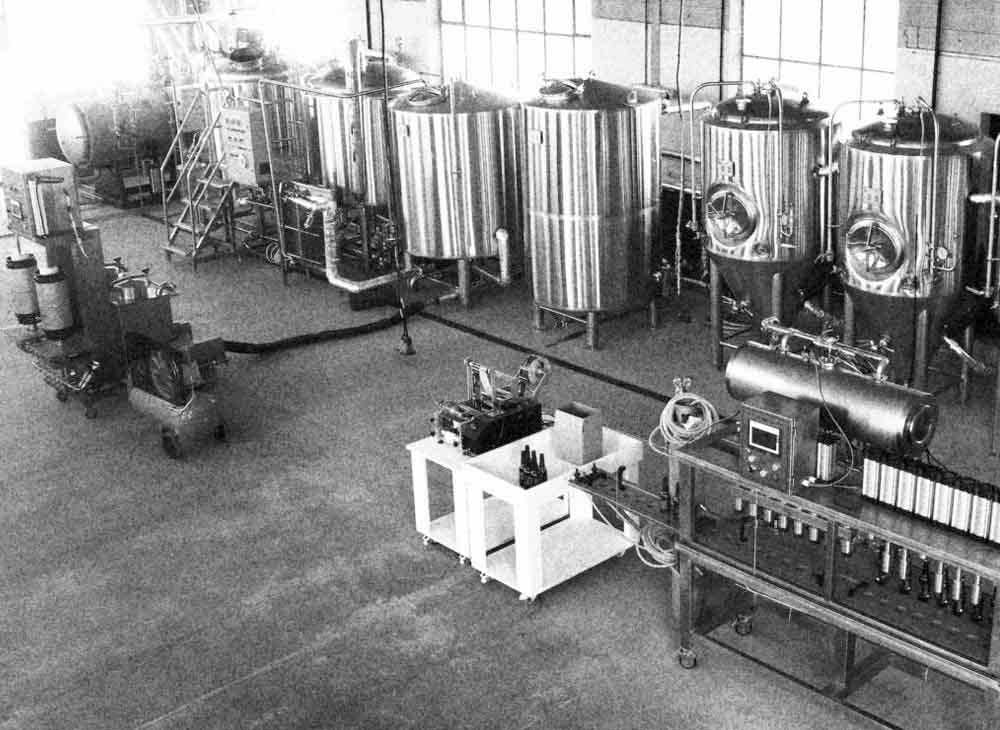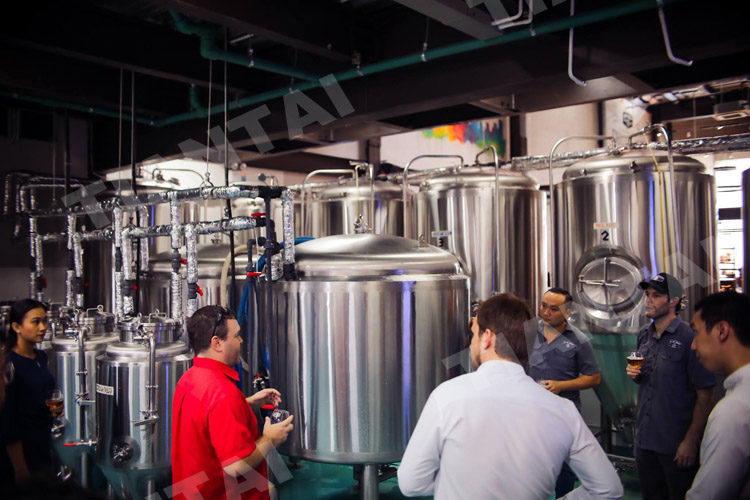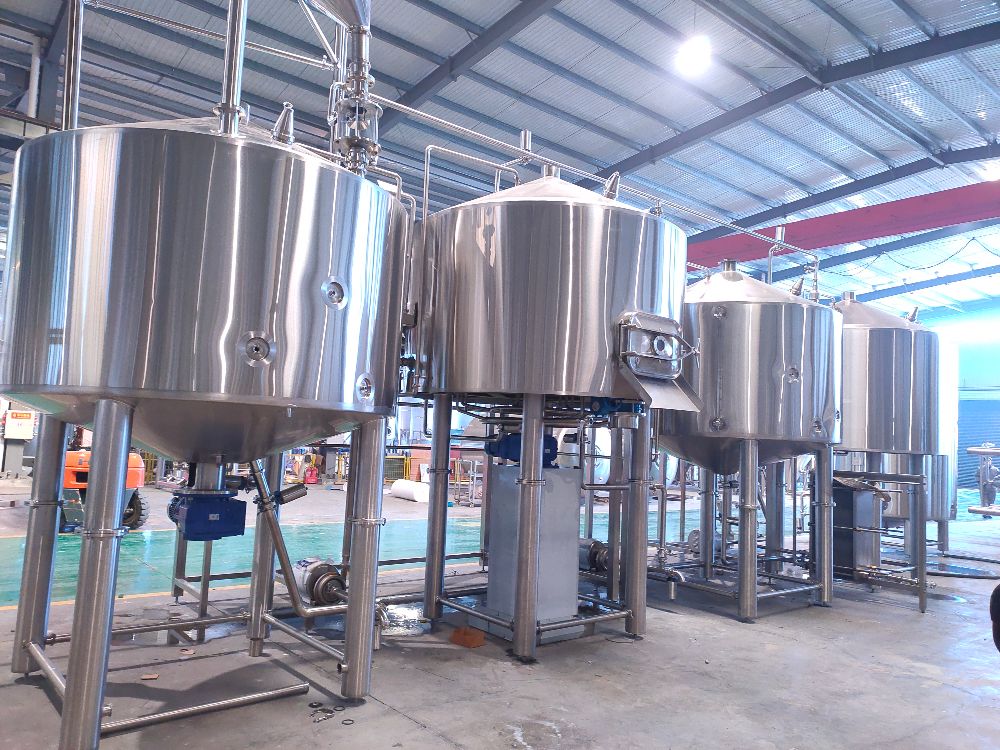The Complete Guide on How to Brew Beer Better (I)
- Dec 04, 2021
- 197
- tiantai
Ever since its inception in the 1980s in the US, the craft beer industry has been on a steep incline. Prior to this, a handful of beer-producing giants overpowered the market, but today, the scene is quite different: 40% of the global beer industry revenue comes from smaller breweries, and they’re taking more and more of their share with each upcoming year.
Beer lovers, as well as the general public, are thrilled with craft beers. Commercialized beer offers barely any variation in flavor, with most focusing on churning out batch after batch of the same pale ale we’ve seen many times over. And there’s nothing wrong with that; everyone loves a good lager. However, the uniqueness and the thrill of a craft beer are undeniable. Beer consumers are turning towards new tastes and new feelings those tastes bring, and we can’t be more excited about it.
If you’re home brewing or a proud owner of a brewery of any size, you know the value it holds in the local community – perhaps even beyond that. You’re offering your customers a refreshing, delicious beverage and an opportunity to spend time with their friends and family, unwind after a long, hard day, or celebrate their hard-won achievements. A good beer is an experience more than anything else.
To stay on top of your brewing game and not let your community down, you want to invest more in your brewing process. You are looking for ways to improve your beer recipes, upgrade your equipment, and ultimately, brew great beer. Hopefully, this complete guide to beer brewing will help you get there.
History of Beer
The significance of beer for humanity is indisputable, and the history of beer goes back a long way. Beer was discovered several thousand years ago in what is today Iran; the first beer-like liquids were likely produced accidentally, thanks to wild yeast. Its popularity grew quickly. Chinese villagers, the residents of ancient Egypt and Mesopotamia, Egyptian pharaohs, African and Sumerian tribes, ancient Romans – everyone flocked around beer, developing various types of brewing methods.
In the Middle Ages, beer began taking the shape of what we drink today. European monasteries are credited with inventions in the beer brewing process. These include adding hops for preservation and a bitter, mouth-watering taste, along with lagering to produce the pale lagers that are so popular, including India pale ales.
In the United States, Prohibition effectively held back the beer industry for decades. However, when those laws loosened up, it was only a matter of time before breweries started springing up all over the country. In 2020, more microbreweries are in operation than there were before the Prohibition, which is a significant accomplishment.

Modern Brewing Equipment
Although there are several types of brewing, the main beer brewing process and fermenting process didn’t change much from the foundation laid by the ancient civilizations. The basics are the same: use a starch grain as a source of carbohydrates to convert them into alcohol through the extraordinary power of yeast. The main ingredients are the same as well: water, barley, different hop varieties, and yeast. It is only the equipment that has advanced dramatically since the early ages of beer, making the entire process simpler, faster, and easier on the brewers and their workers.
When you walk into an average brewery, you will find spotless, stainless steel equipment – grinders or grain mills, full or partial mash tuns, lauter tuns, all the way to the packaging machines. The cleaning and sanitizing procedures have been fine-tuned to perfection, seeing how beer falls under strict purity regulations.
One of the main features of brewing equipment is that it is almost entirely automated. The introduction of automation was a revolutionary moment in the recent beer brewing history for multiple reasons – it sped up the brewing process, reduced the number of workers required for physically strenuous tasks, reduced the risk of accidents and workplace injuries, increased efficiency, and improved the consistency of the product.
If some of the steps in your brewing process are not yet automated, you should consider making them so. For example, if workers are transporting grain from the mill into the mash tun by hand or heavy machinery, you might want to look into conveyor systems.
Setting up the appropriate conveyor system will remove the human factor from transporting grain, such as malted barley or wheat. Your workers won’t have to repeat the same motions over and over again, and their health won’t suffer. Tubular drag cable and disc conveyors, such as those that Cablevey Conveyors offers, have proven to be game-changing in a brewery. They gently transport the grain, with little to no breakage, preserving the integrity of your grain arriving at the mill and through to the mash tun.
The key to better beer brewing is higher efficiency, consistent quality, and minimal risk for the workers.
Cablevey systems, in particular, are exceptional in handling long runs in tight spaces. Industrial space is expensive, and breweries don’t often have the luxury of setting up conveyors exactly like they’d want them. Cablevey goes above and beyond to ensure customized, seamless transport of your grain in tight corners. Cablevey offers component parts in a variety of sizes, tube diameters and materials, as well as a multitude of options when it comes to inlets and cleaning and transfer systems.
Additionally, Cablevey’s conveyors are extremely reliable – your brewery won’t have to pause with production even if your systems are running for 24 hours a day, five days a week. Compared to other types of conveyors, Cablevey will meet your brewery’s needs head on and deliver a transport solution that is custom engineered to fit your production facilities.
Technology Innovations
Aside from automation, there are more than a few companies continually working on new brewing technologies. Through different expos and conferences, these technologies are presented to the craft brewing industry, and a lot of them are met with enthusiasm. Craft brewers are adventurous and bold – they like to try new things to refine their process and produce more delicious, foamy drinks.
In the past few months, you might have missed a few of these technological advancements that could help you brew:
Oil-free compressors
You’re probably using compressed air for various purposes, such as pneumatic transportation, the washing of keg systems, valve modulation, and more. Compressors free of oil will keep your brewery pure and sanitary, no matter what. They will ensure that none of these processes are contaminated and that your batch of beer isn’t at risk of spoiling. To maintain a pure brewing process, an oil-free compressor is a must-have.
Derrick
Sales Manager
[email protected]
Tiantai Beer Equipment
Beer lovers, as well as the general public, are thrilled with craft beers. Commercialized beer offers barely any variation in flavor, with most focusing on churning out batch after batch of the same pale ale we’ve seen many times over. And there’s nothing wrong with that; everyone loves a good lager. However, the uniqueness and the thrill of a craft beer are undeniable. Beer consumers are turning towards new tastes and new feelings those tastes bring, and we can’t be more excited about it.
If you’re home brewing or a proud owner of a brewery of any size, you know the value it holds in the local community – perhaps even beyond that. You’re offering your customers a refreshing, delicious beverage and an opportunity to spend time with their friends and family, unwind after a long, hard day, or celebrate their hard-won achievements. A good beer is an experience more than anything else.
To stay on top of your brewing game and not let your community down, you want to invest more in your brewing process. You are looking for ways to improve your beer recipes, upgrade your equipment, and ultimately, brew great beer. Hopefully, this complete guide to beer brewing will help you get there.
History of Beer
The significance of beer for humanity is indisputable, and the history of beer goes back a long way. Beer was discovered several thousand years ago in what is today Iran; the first beer-like liquids were likely produced accidentally, thanks to wild yeast. Its popularity grew quickly. Chinese villagers, the residents of ancient Egypt and Mesopotamia, Egyptian pharaohs, African and Sumerian tribes, ancient Romans – everyone flocked around beer, developing various types of brewing methods.
In the Middle Ages, beer began taking the shape of what we drink today. European monasteries are credited with inventions in the beer brewing process. These include adding hops for preservation and a bitter, mouth-watering taste, along with lagering to produce the pale lagers that are so popular, including India pale ales.
In the United States, Prohibition effectively held back the beer industry for decades. However, when those laws loosened up, it was only a matter of time before breweries started springing up all over the country. In 2020, more microbreweries are in operation than there were before the Prohibition, which is a significant accomplishment.

Modern Brewing Equipment
Although there are several types of brewing, the main beer brewing process and fermenting process didn’t change much from the foundation laid by the ancient civilizations. The basics are the same: use a starch grain as a source of carbohydrates to convert them into alcohol through the extraordinary power of yeast. The main ingredients are the same as well: water, barley, different hop varieties, and yeast. It is only the equipment that has advanced dramatically since the early ages of beer, making the entire process simpler, faster, and easier on the brewers and their workers.
When you walk into an average brewery, you will find spotless, stainless steel equipment – grinders or grain mills, full or partial mash tuns, lauter tuns, all the way to the packaging machines. The cleaning and sanitizing procedures have been fine-tuned to perfection, seeing how beer falls under strict purity regulations.
One of the main features of brewing equipment is that it is almost entirely automated. The introduction of automation was a revolutionary moment in the recent beer brewing history for multiple reasons – it sped up the brewing process, reduced the number of workers required for physically strenuous tasks, reduced the risk of accidents and workplace injuries, increased efficiency, and improved the consistency of the product.
If some of the steps in your brewing process are not yet automated, you should consider making them so. For example, if workers are transporting grain from the mill into the mash tun by hand or heavy machinery, you might want to look into conveyor systems.
Setting up the appropriate conveyor system will remove the human factor from transporting grain, such as malted barley or wheat. Your workers won’t have to repeat the same motions over and over again, and their health won’t suffer. Tubular drag cable and disc conveyors, such as those that Cablevey Conveyors offers, have proven to be game-changing in a brewery. They gently transport the grain, with little to no breakage, preserving the integrity of your grain arriving at the mill and through to the mash tun.
The key to better beer brewing is higher efficiency, consistent quality, and minimal risk for the workers.
Cablevey systems, in particular, are exceptional in handling long runs in tight spaces. Industrial space is expensive, and breweries don’t often have the luxury of setting up conveyors exactly like they’d want them. Cablevey goes above and beyond to ensure customized, seamless transport of your grain in tight corners. Cablevey offers component parts in a variety of sizes, tube diameters and materials, as well as a multitude of options when it comes to inlets and cleaning and transfer systems.
Additionally, Cablevey’s conveyors are extremely reliable – your brewery won’t have to pause with production even if your systems are running for 24 hours a day, five days a week. Compared to other types of conveyors, Cablevey will meet your brewery’s needs head on and deliver a transport solution that is custom engineered to fit your production facilities.
Technology Innovations
Aside from automation, there are more than a few companies continually working on new brewing technologies. Through different expos and conferences, these technologies are presented to the craft brewing industry, and a lot of them are met with enthusiasm. Craft brewers are adventurous and bold – they like to try new things to refine their process and produce more delicious, foamy drinks.
In the past few months, you might have missed a few of these technological advancements that could help you brew:
Oil-free compressors
You’re probably using compressed air for various purposes, such as pneumatic transportation, the washing of keg systems, valve modulation, and more. Compressors free of oil will keep your brewery pure and sanitary, no matter what. They will ensure that none of these processes are contaminated and that your batch of beer isn’t at risk of spoiling. To maintain a pure brewing process, an oil-free compressor is a must-have.
Derrick
Sales Manager
[email protected]
Tiantai Beer Equipment


.jpg)

